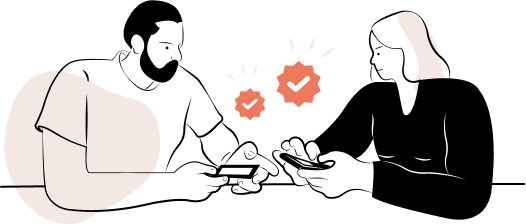This week we spoke with Philip Silva from BrightID, who explains how nested DAOs work. He provided reflections, based on their experiences, on some of pitfalls and benefits of decision-making using this form of decentralised organisation.
BrightID is a social identity network, governed by a DAO which is architected to include nested sub-DAOs. This system of DAO mechanisms is implemented using Aragon.
DAO participants are uniquely identified through the BrightID protocol. Unique identity is important for how governance works, by ensuring fair participation. Verifiable identity is essential for many real-world use cases, including social finance innovations such as Universal Basic Income (UBI).
Bright-ID is pushing the boundaries of what's possible with digital organisations. –Aragon
In the first phase of its existence, the BrightID main DAO has had around 16 voting members. Sub-DAOs have been implemented with between 2 to 9 members. Silva believes nested DAOs can be a great tool for practical decision-making. The mothership DAO (as Silva calls it) is the custodian of high-level goals and oeprating principles of the organisation. “The main group of people don’t want to make the mundane little decisions, which can slows process down”.
This undertaking doesn’t come without any pitfalls. Allocating budgets to sub-DAOs increases the attack surface of an organisation. This has security implications, so the functions and scope of authority of these sub- structures must be carefully designed to reduce risks. On the upside, giving small groups of dedicated people the autonomy to make descions within defined scopes enables organisational flexibility and speeds up decision-amking processes.
Governance requires voting. But voting on everything can lead to fatigue and attrition in membership. With smaller groups of participants, it is easier to keep people engaged. The Bright-ID governance protocol requires 50% +1 to pass a proposal. Participation has tended to be good, but at times DAO members need to pester one or two people to vote, before a proposal passes. It is important to get the balance right and not over-burden members with too many proposals. Many more decisions can be processed by multiple sub-DAO, which each focus on a defined scope of decisions.
The overall operation of an organisation can become much more effective when decisions are delegated to the right groups of people. DAOs reduce the risks of a small group of powerful people controlling and entire organisation. "We wanted to build an actual decentralised thing...our ambitions are far bigger than any of us."
Day-to-day decsions, such as authosiring an expense reimbursement, or specialised decisions which are best delegated to people with the best expertise and information, do not have to go through the main DAO. For Bright-ID risks are contained by constraining the amounts of resources allocated to each sub-DAO. Members of the main DAO regularly reviewed each sub-DAO and approve smaller increments of funds to flow into sub-DAOs, as a control mechanism.
"The limit to the damage they could cause was minimal because we’d only fund them on a monthly basis," Silva adds.
The key advice is to be prepared, says Silva: "Figure things out before you ever vote. So you really know what you’re voting and have thought through how proposals will be executed". This means figuring things out off-chain, before you have an on-chain vote. If it's going to be contentious that's OK, as long as you're prepared for each outcome for every vote put forward. "If you don't understand the implications of what you are deciding, it's going to go poorly."
Silva makes a comparison with how Senators in the US have extremely powerful positions in the political world, but make many decisions on important issues they do not necessarily know much about and which are strongly influenced by lobbyists. This system of governance gives representatives a lost of power. But ideally this power should be delegated to smaller groups of domain experts.
Could nested DAOs improve how important policy decisions get made?
Stakeholder Opportunity
This week BrightID announced the launch of the public participation opportunity to become a stakeholder in the BrightID DAO.
We just launched the $BRIGHT token, Bright DAO, and $BRIGHT fairdrop and farms pages. Join us!https://t.co/tBGVO282ct
— BrightID🔆 (@BrightIDProject) September 16, 2021
⬇ pic.twitter.com/Bs5jij3usa





